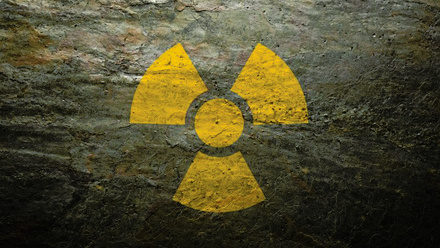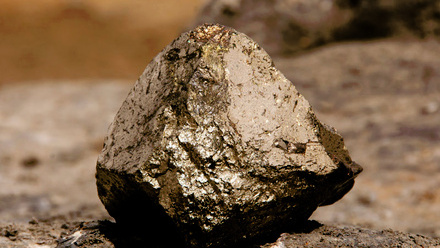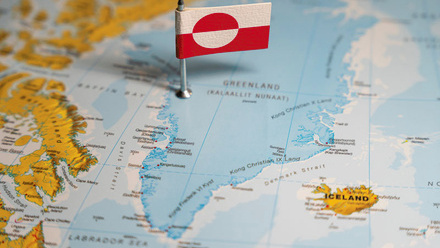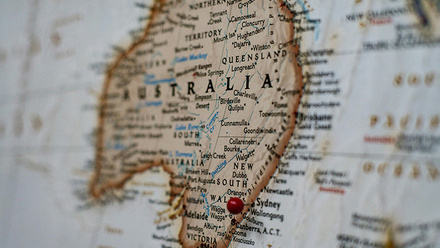A deep dive into deep sea mining
Michael Schwartz sifts through the multi-faceted arguments supporting or repudiating mining from the seabed.
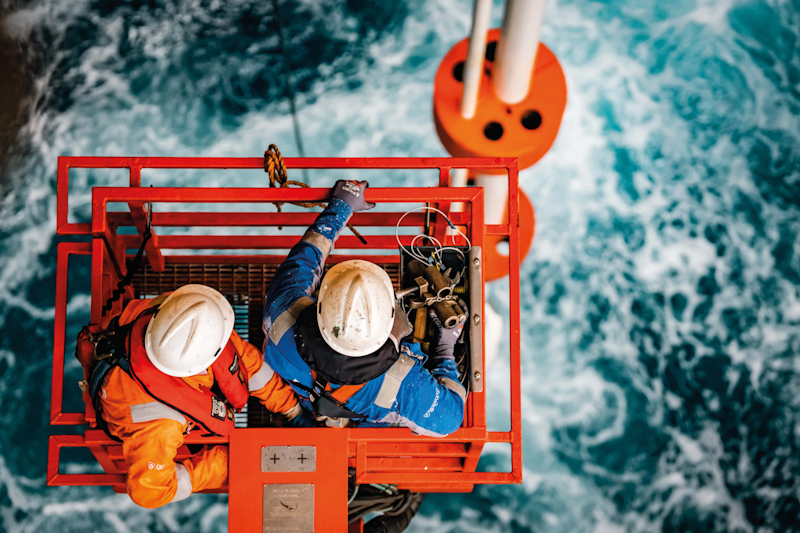
Passionate arguments for and against deep-sea mining are fuelled by concerns about the destruction of animal remains dating back billions of years, through to pleas in favour of the practice because these minerals will contribute to future technologies and take their place in the ranks of critical minerals.
As research for this article got underway, the Government of the US State of California banned seabed mining in its waters. Luz Rivas, Californian Assembly Member, was ecstatic. 'California stands out as a leader and is showing the nation and world the importance of protecting our oceans in the hope others will follow our lead', he exclaimed.
This ban, and the fervour behind it, typify the often-heated controversy generated – rarely has any one form of mining sparked off such intense argument as the extraction of minerals from the bottom of our oceans. In fact as this article was going to press, France had called for an international ban on the practice.
California Governor Gavin Newsom (Democrat) signed the California Seabed Mining Prevention Act (AB1832) to protect roughly 6,475km2 of ocean floor and connected habitats.
The decision was, to put it mildly, decisive – passing by 113-0 in both the Assembly and Senate.
California now joins Oregon and Washington – where legislation was passed in 1991 and 2021, respectively – to form a substantial area explicitly banning marine mining that totals almost 20,000km². Assembly member Rivas, in speaking to Materials World, comments, 'I thought it was important to take steps to pass policy that would prevent the exploitation of nature’s resources, instead of waiting for a disaster to occur and passing reactionary policy.
'Fish, invertebrates, coral, marine mammals, algae – among other marine life – are vulnerable to seabed mining, which can generate large sediment plumes that include toxins, which, in turn, can put beaches and tide pools at risk.'
She continues, 'California ranks as the fifth largest economy in the world. If AB1832 had not been passed by the California Legislature and signed by the Governor, we would be putting our state’s ocean recreation, tourism and fishing industries at risk. These sectors alone generate US$27bln annually. California wants to make sure that we protect our coastal communities and marine life for generations to come.'
Making a case for mining
Yet just as those opposing deep sea mining are passionate for their cause, so are the companies seeking to start work – with equal dedication and fervour.
The Metals Company (TMC) states that it is, '…developing the world’s largest estimated source of battery metals, with enough nickel, copper, cobalt and manganese to electrify the entire US passenger vehicle fleet.
'Our aim is to supply the metals needed to store clean energy and power electric vehicles with the least impact, and to in turn create a closed-loop system – a world where metals are not mined and dumped, but rented and returned.'
In operational terms, a TMC-tracked robotic vehicle will direct jets of water across the tops of the nodules to gently loosen and direct them up towards a 4km-long-riser system.
This will transport them from the seafloor to a surface production vessel on compressed air bubbles. The nodules will then be shipped to shore for processing.
The Clarion Clipperton Zone (CCZ) is TMC’s sole area of interest. A company spokesperson stated, 'The company holds exploration rights to three [CCZ] areas sponsored by the developing states of Nauru, Kiribati and the Kingdom of Tonga.
'TMC is exclusively focused on polymetallic nodules, and while these resources may be found in other parts of the world, almost all of the exploration contracts for polymetallic nodules awarded by the International Seabed Authority (ISA) are found in the CCZ.'
Did you know?
Typical of seabed minerals is the manganese nodule – an object usually between 30-100mm in diameter. Its title is deceptive as manganese is rarely the only mineral in the nodules. They yield manganese, but also to lesser extents nickel, copper, cobalt, iron, silicon and aluminium.Manganese nodules are located in the following areas:
- The Clarion Clipperton Zone (CCZ) roughly midway between Hawaii and the Clipperton Islands at depths between 4,000m and 6,000m. The International Seabed Authority (ISA) estimates this resource as the largest, comprising 21Bt.
- The Penrhyn Basin within the exclusive economic zone of the Cook Islands.
- The Peru Basin in the south-east Pacific.
- The Indian Ocean Nodule Field roughly 500km south-east of Diego Garcia Island.
- The Eastern Pacific, including the area around Juan Fernández Islands.
Regarding the ongoing regulatory progress, the firm says, “At [the State of] Nauru’s request in 2021, the ISA has been tasked with adopting a final regulatory framework to govern deep-sea nodule collection by July 2023.
'TMC’s subsidiary – Nauru Ocean Resources Inc – is conducting a multi-year environmental and social impact assessment and is currently undertaking pilot nodule collection system trials in the CCZ to provide critical environmental impact data that will inform its submission to the ISA for an exploitation contract.'
The ruling authority
Based in Jamaica, the International Seabed Authority (ISA) comprises 167 member states and the EU. It is mandated under the UN Convention on the Law of the Sea to organise, regulate and control all mineral-related activities in the international seabed area for the overall benefit of mankind.Taking that into consideration, the ISA is duty-bound to protect the marine environment from the effects of deep seabed activities.
The recent ban on seabed mining in California, USA, coincided with a key meeting of the ISA from 31 October to 11 November 2022, which intended to advance its draft regulations on mineral resource exploration.
The meeting covered sustainable exploitation, transfer of rights and obligations during contract negotiations, as well as standardised procedures for regional environmental management plans, with a focus on the Northern Mid-Atlantic Ridge. The latter is part of the world’s largest mountain range along the floor of the Atlantic Ocean. Only a few exceptionally high points protrude above the sea surface.
When comparing seabed and underground-won minerals, TMC outlines that polymetallic nodules contain high grades of four critical battery metals – nickel, cobalt, copper and manganese – in a single rock, meaning that four times less ore needs to be processed to obtain the same amount of metal. It adds that, because they contain no toxic levels of heavy elements, the entirety of a nodule can be used for near-zero solid waste production.
The company says, 'Contrast that with terrestrial resources, where falling ore grades means miners must dig deeper and wider for lower-quality ores, and spend more money to produce the same amount of metal.'
Furthermore, 'terrestrial mining for battery metals like nickel and cobalt often requires deforestation and the displacement of indigenous communities as the mine site is built out. The consequences of these operations can result in numerous risks to human life and health...the need to store waste and toxic tailings in risky dams...and the introduction of harmful chemical compounds into local water tables, among others.'
TMC continues, 'By contrast, recent studies have shown nodules to be capable of reducing the life cycle impacts of conventional battery metal production by between 70-99%, including with up to 90% less CO2, near-zero solid waste, and no need for the displacement of indigenous communities.'
The bottom line? TMC points out that a nodule comprises one-third metal, with roughly half of its value driven by nickel content. The firm says it has developed a metallurgical flowsheet to produce near-zero solid waste and no toxic tailings. As a result, TMC expects to become the second lowest cost producer of nickel at steady state production. 'While we wouldn't expect a difference in the price customers pay, down the road we anticipate there could be a premium paid for metals with drastically lower environmental impacts and carbon footprints, such as metal from nodules.'
The risks and concerns
Compared to those in favour of deep-sea mining, the environmental case against the practice is far more diverse.
Dr Daniel Gluesenkamp, of the California Institute for Biodiversity is – among others – in favour of the ban in California. He stresses, 'Our oceans are this planet’s final frontier of discovery. They are ancient and vast, an inspiring mystery and a powerful solution to the countless mistakes that we humans inflict on our home...Seafloor mining is devastation scaled, an activity which can in a decade wreak centuries of injury to systems that may literally never heal. Our hunger for minerals is not so great that the time has come to wreck the mother oceans that sustain us.'
Andrew K Sweetman, Professor at Heriot-Watt University, Edinburgh, UK, focuses precisely on the impact of anthropogenic stressors on shallow and deep-sea benthic ecosystems within the CCZ. He describes how pioneering experiments were conducted to assess the after-effects of seabed mining, notably within the Peru Basin in 1989, where small ploughs were dragged along the seabed to simulate mining.
The site, he shares, remains 'scarred'. Regarding potential restoration of the area, he comments, 'You can predict by going back to the site over time and working out the trend of recovery. However, the microbes which should bounce back the fastest have not recovered after over 30 years'. Disturbances to life-forms, whether living or long-dead, are another risk factor. They can include:
- Sediment dislodged by mining – a challenge to miners to ensure it does not clog the process and environmentalists who prefer to see the sediment back on the seabed.
- Destruction of the seabed heritage as skulls and bones of dead creatures are broken up and lost forever.
- Forfeiting the CO2 absorption benefits of seabed microbes.
Sweetman lists some safeguards he feels should be incorporated:
- Marine-protected zones to protect the biodiversity and functions that are found in mined areas.
- Regular monitoring to identify when a mine operation is having a significant environmental impact.
- Carefully carry out baseline investigations to determine which areas are unique in terms of biodiversity and ecosystem function.
- He was also asked whether he is totally opposed to such mining or if there is a case for it perhaps on a limited scale.
'I’m not against it, but I’m not for it. I have to remain neutral,' he says.'What I would say is that if it is done, it has to be done with the best environmental information at hand to allow us to mine in the most environmentally friendly way possible. I think that there will need to be mining to some extent to allow us to get to net-zero and keep up with our obsessive demand for new cell-phones, computers, etc.'
Recycling and reserves
One argument for a total ban on seabed mining from environmentalists relies on recycling of materials. Here, however, the World Bank and the International Energy Authority (IEA) have concluded that recycling will not be enough to meet demand. Shortages of any mineral can drive up prices or adversely affect production.
TMC has identified in situ nodules that they say would be equivalent to the requirements of 280 mln electric vehicles. How long these nodules last is a function of the amount of capital expenditure TMC deploys to collect them. If one vessel collects 1.3Mt/y of nodules (wet) in its initial stage, they would last over a thousand years. More ambitiously, 10 vessels each collecting 6.4Mt/y would exhaust the company’s resource in less than 25 years.
Quantities of nickel, cobalt and manganese within nodules are reported to exceed equivalent land-based deposits by several orders of magnitude – it is safe to assume that such resources are unlikely to be exhausted any time soon.
And recycling? The nodules themselves will not be recycled but the metals they contain can be.
There are currently insufficient quantities of metals in circulation and recycled quantities of copper, lithium, nickel, and cobalt from spent batteries would only reduce primary supply requirements by around 10% by 2040 (as per a recent IEA report).
For TMC, 'Polymetallic nodules could help deliver a massive injection of critical metals which could dramatically reduce – and eventually eliminate – the need to take any more metals from the planet.'
The arguments for and against the practice are certainly multi-faceted and passionately argued. A definitive strategy – assuming it will be allowed – will be achieved painstakingly and possibly beyond the ISA’s 2023 timetable.



